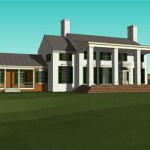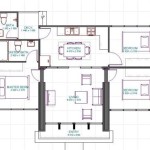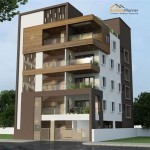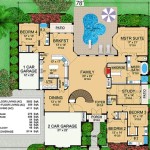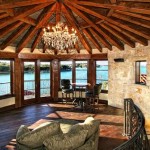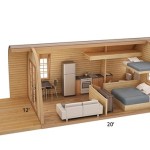Haunted House Lesson Plans: Art
Haunted houses offer rich thematic material for art lessons, appealing to students' imaginations and allowing for creative exploration across various media. These lesson plans provide opportunities to develop technical skills while engaging with storytelling, symbolism, and emotional expression. They cater to a wide range of age groups and skill levels, offering adaptability for diverse learning environments.
Exploring Line and Shape: Spooky Silhouettes
- Introduce the concept of silhouettes and their use in creating a sense of mystery and suspense.
- Students can draw or cut out silhouettes of classic haunted house elements like bats, ghosts, gnarled trees, and cobwebs.
- Experiment with layering silhouettes to create depth and visual interest.
- Explore different media, such as black construction paper, ink, or paint.
- Discuss how the use of positive and negative space impacts the overall composition.
Perspective and Depth: Drawing a Haunted House
- Introduce the concept of one-point perspective to create the illusion of depth in a drawing of a haunted house.
- Guide students through the process of establishing a vanishing point and drawing converging lines.
- Encourage the addition of details like crooked windows, broken shutters, and overgrown vegetation to enhance the haunted atmosphere.
- Explore the use of shading and value to further enhance the three-dimensional effect.
- Consider incorporating elements of forced perspective to exaggerate the sense of scale and unease.
Color and Mood: Painting a Spooky Scene
- Discuss the psychological effects of color and how it can be used to evoke specific emotions.
- Introduce a limited color palette associated with haunted houses, such as dark blues, purples, greens, and grays.
- Experiment with different painting techniques, like washes, dry brushing, and splattering, to create texture and atmosphere.
- Encourage students to consider the interplay of light and shadow to enhance the mood of their painting.
Mixed Media Masterpiece: Haunted House Collage
- Gather a variety of materials, including textured paper, fabric scraps, found objects, and magazine clippings.
- Guide students in arranging and layering these materials to create a textured and visually rich haunted house collage.
- Introduce different adhesive techniques, such as glue sticks, mod podge, and double-sided tape.
- Encourage experimentation with different techniques like tearing, ripping, and cutting to create interesting edges and textures.
- Discuss the concept of visual storytelling and how different elements can be combined to create a narrative.
Sculpting Spooky Creatures: Clay Creations
- Introduce basic hand-building techniques with clay, such as pinching, coiling, and slab building.
- Guide students in sculpting spooky creatures commonly associated with haunted houses, such as ghosts, bats, spiders, or skeletons.
- Explore different texturing techniques using tools or found objects to add details and enhance the visual interest of the sculptures.
- Discuss the importance of proportion and balance in creating believable forms.
- Once dry, consider painting or glazing the sculptures to add color and further enhance their character.
Mask Making: Monster Mash
- Explore different mask-making techniques, using materials like cardboard, paper mache, or plaster.
- Encourage students to research and design masks inspired by classic monster archetypes or their own imaginative creations.
- Introduce various decorative techniques, such as painting, adding embellishments, feathers, or yarn.
- Discuss the cultural significance of masks and their use in storytelling and performance.
Printmaking: Ghostly Prints
- Introduce basic printmaking techniques such as monoprinting, relief printing, or stenciling.
- Explore different materials for creating printing plates, such as foam sheets, cardboard, or linoleum.
- Guide students in designing and carving or cutting their printing plates to create ghostly images or haunted house scenes.
- Experiment with different inks and papers to achieve varied effects.
- Discuss the concept of editioning in printmaking and the unique qualities of each print.
Digital Art: Designing a Virtual Haunted House
- Introduce digital art software and tools appropriate for the students' skill level.
- Guide students in creating digital illustrations or designs of haunted houses, utilizing layering, brushes, and other digital art techniques.
- Explore different digital effects and filters to enhance the spooky atmosphere.
- Discuss the principles of digital composition and how to create visually appealing digital artwork.
Creative Writing and Illustration: Haunted House Storybook
- Combine art and creative writing by having students write and illustrate their own haunted house stories.
- Encourage the development of characters, plot, and setting to create engaging narratives.
- Explore different illustration styles and techniques to complement the written story.
- Discuss the relationship between text and image and how they can work together to create a cohesive and immersive experience.
- Consider binding the finished stories into individual or class storybooks.

Art Lesson Draw A Haunted House Faber Castell Usa

Art Project For Upper Elementary

Y House Art Lesson Teacher In La

Y Art Learn To Draw A Haunted House

Y House Art Lesson Teacher In La
Haunted House Painting Tutorial Drawing Watercolor Lesson

How To Draw A Haunted House Make Mark Studios

Y House Art Lesson By Teacher In La Plans Elementary Homeschool Activities

Explore The Enchanting World Of Elementary Art Through Captivating Photos

Art Sub Lessons Plan


